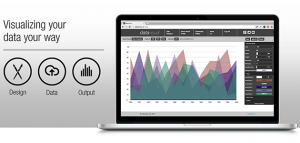With an increasingly changing business landscape, identifying and relying on your marketing assets is now more important than ever.
But what are marketing assets today?
As new technology, methods and techniques are gaining ground and showing resounding results, the definition of these assets is expanding in surprising ways.
No longer do they consist of just concrete tangibles, such as brochures, but factor in virtual or digital assets and metrics as well.
As a result, knowing how to measure, quantify, and protect these assets is becoming challenging yet essential for your digital marketing strategy.
Investing in marketing assets, then, will ensure you reach your targeted audiences and increase your leads and conversion rates with more ease.
Keep reading to know more.
What are Marketing Assets?
The definition of marketing assets continues to evolve today.
Officially, the definition of an asset is a specific resource owned or controlled by a company or individual that is expected to provide future benefits.
That means it will lead to a reduction in expenses, generate higher cash flow, or increase sales.
Marketing assets relate to the valuable, prized resources utilized by an organization to promote its brand, product, or service. They, too, are expected to provide future benefits.
As the definition evolves, not only will it include the resources accumulated to reach marketing objectives, such as content, but also evaluated metrics and strategies to benefit the growth of your brand.
What are the Marketing Assets You Should Invest In?
While marketing efforts may vary across industries, there are still certain marketing assets you should invest in and make a priority.
You’ll need to expand your perception of what an asset is, however, and reach beyond traditional thought.
Consider the following seven marketing assets to invest in today.
1. Branding Strategy and Brand Monitoring
When it comes to marketing assets, your branding is at the top of the list.
More than just a logo, your brand identifies how you show up in the world and how you interact with consumers. Everything you do in the marketing world starts and ends with your branding strategy.
After investing in building a solid brand strategy, complete with recognizable logo and message, you next need to focus on ways to build and protect your brand image and reputation.
Start by developing branding guidelines and share these with everyone in your organization to help with consistency and as a way to protect and maintain your brand’s value.
From there, monitor your brand reputation in the marketplace.
The benefits a positive brand reputation will provide to your organization is that you build and maintain trust and authority with customers or clients and can use this in your marketing efforts now and in the future.
Practice social listening on social media platforms, monitor reviews and comments about your brand, and control how your brand interacts with other brands, organizations, and influencers in the marketplace.
A positive brand reputation is an asset and will lead to higher customer retention and loyalty while also attracting ongoing new customers.
2. Content Marketing Strategy
Creating the right content surrounding your brand is essential. It is this content and the strategy you use to promote it that becomes a valuable marketing asset.
Content builds brand awareness and includes blog posts, white papers, case studies, brochures, eBooks, infographics, landing pages, and product or service webpages.
It creates for your buyer personas a valuable experience.
To make the most of your content opportunities, however, it’s essential to invest in a content marketing strategy that will guide you and provide the most value in both the short and long term.
Also, once you create content, it becomes an asset that you can repurpose, redesign, and reshare in accordance with your defined strategy.
Since you already own this content, seek out ways to share it in new ways. For example, if a particular blog post or podcast episode proves popular, turn it into an online course, infographic, or interactive content.
Another identifiable element of this marketing asset is the defined SEO tactics you successfully use in your content to rank higher in search engine results and therefore reach more of your targeted audience.
Many marketers claim that your website is a separate marketing asset that needs investment of both time and resources to build, maintain, protect, and use for the brand’s benefit.
There’s no denying that your website is valuable real estate online and where you can build brand awareness and attract new customers.
Yet, it’s the content you include and the strategy behind it that are your real assets.
3. Detailed Crisis Management Plans
A strong crisis management plan is another valuable marketing asset to invest in.
It’s inevitable that at some point, you may experience some type of crisis that can negatively impact your brand.
Instead of waiting until this happens, consider the best ways to manage a crisis and document the steps for your marketing staff to take to minimize damage.
For example, it only takes one negative comment on social media to spiral out of control and lead to a loss of customers.
But, if you already have a social media crisis management plan in place, you can respond in ways that protect your brand and divert disaster.
As with maintaining your brand reputation, monitor social media channels, review sites, and other online locations to know how people are talking about your brand.
If you find a comment about a negative experience, refer to your crisis management plan and take the necessary steps to alleviate its impact.
4. Social Media Metrics
Your marketing assets are not always obvious at first and often hidden in the digital world. One of these, in particular, is social media metrics.
Social media metrics involve the analysis of data to determine viewer activity on social media platforms as it relates to your business and marketing goals and your ROI.
You can tie business goals, such as increasing conversion rates, to your social media metric measurements, and this can lead to data-driven decisions within your organization.
Social media channels can provide you with a multitude of data to work with in your marketing campaigns.
Two valuable social media metrics include:
Social Media Engagement
Engagement directly impacts the algorithms on the various social media platforms. In other words, with higher engagement, your posts will become more visible.
Invest in obtaining engagement metrics, including follower counts, likes, shares, clicks, retweets, mentions, and comments.
Success of Hashtags
Another valuable social media metric to include is your use of hashtags and the resulting reach they experience.
By monitoring the performance of hashtags, you can learn how popular each platform is for your targeted audience, trace how your particular content is shared, and determine the value of your social media campaigns.
Other metrics to focus on include:
- Impressions and Reach
- Volume and sentiment (also referred to as share of voice)
- Referrals and Conversions (ROI)
To find these social media metrics, you can start with each platform’s native analytics feature, including Twitter Analytics and Facebook Insights.
You can also work with one or more of the various social media analytics tools available today as well.
5. Email Lists and Lead Nurturing Process
Your email list continues to be a valuable marketing asset and one you need to invest in to build and add to on a consistent basis.
You can accomplish this by using both lead generation and demand generation tactics.
This list of contacts, customers, and potential customers becomes increasingly valuable over time.
A second valuable part of this marketing asset is your email lead nurturing process, which can keep you in front of your prospects.
Lead nurturing helps you to build relationships and travel with your prospects along their buyer’s journey.
When done well, your process allows your targeted audience a chance to get to know your brand, find things to like about it, and build trust. This, in turn, leads to a higher chance of conversion and returning customers.
The most common email sequence types include:
- Welcome
- Confirmation
- Onboarding
- Cart Abandonment
- Repeat Customer
- Re-engagement or Reactivation
- Event
- Follow-Up
With a robust email list and lead nurturing process, you can increase email open rates and reach higher sales.
6. Competitive Analysis
Knowing what competitors are doing and how successful they are is valuable information that can better your own efforts.
As a result, a competitive analysis becomes another valuable marketing asset for your brand.
It is a particular strategy you undertake involving research to gain valuable insight into your major competitors’ products, services, marketing tactics, and sales.
Why do one? How will it serve as an asset to help you develop a better marketing strategy for your brand?
A competitive analysis can show the strengths and weaknesses of competitors’ products or services and their marketing campaigns and strategies.
You can use this information to identify more marketplace opportunities for your products or services.
You can also learn from a competitor’s customer reviews how their product or service is excelling and where it is falling short.
Use this information to increase the value of your own product or service and promote it as a solution to a need not being met by your competitor.
In other words, with a competitive analysis, you can discover ways to differentiate your brand from your competition.
Other benefits of a competitive analysis include:
- Provides you with an industry benchmark to help measure growth.
- Notifies you of issues or crises affecting your business niche.
- Keeps you aware of evolving trends in your industry.
- Alerts you to gaps in market offerings.
With a competitive analysis, you can gain valuable insights as to how to create, adjust, or add to your marketing strategy.
7. Compiled Data
Your data is a valuable resource when it comes to marketing and the success of your brand.
There are many ways to collect and use this data, and it can be instrumental in your ongoing decision-making.
Yet, your data is only a true marketing asset if you break it down into useable insights.
The days of big data and the challenges of making sense of it all are now past. With the help of analytics and artificial intelligence (AI), you can make valuable use of your data and turn it into an essential asset.
Your analyzed data assets can:
- Help you understand your audience, including their online behavior.
- Allow you to understand your competitors better.
- Guide you to discovering hidden opportunities.
- Alert you to changes in your industry (trends, laws, new technology), so you can stay above the curve and be competitive.
On a more specific level, your collected data can show you:
- The types of projects that are most successful.
- Which type of media drives the most traffic to your website (organic, paid, earned).
- The success of specific content, such as a landing page.
As a result, marketing data assets can help you design and implement new campaigns based on that data and past successes.
Treating data as a marketing asset, then, makes sense. The more you work with your data and let it guide you, the better this asset will become.
Wrap Up: Invest in Building and Maintaining Your Marketing Assets Beginning Today
Now you have more tools to work with to effectively and successfully reach your targeted audiences.
By identifying and utilizing your marketing assets, you can boost brand awareness, increase sales, and position your organization favorably above your competitors.
Focus on one or all of these marketing assets to further your marketing campaigns and reach wider audiences beginning today!
And to help your organization take control of your marketing budget and find more ways to invest in these assets, download our marketing budget kit!



![[ROCK NA] [EBOOK SEO] Complete Guide](https://rockcontent.com/wp-content/uploads/2024/06/banner_Search-Engine-Optimization.png)






